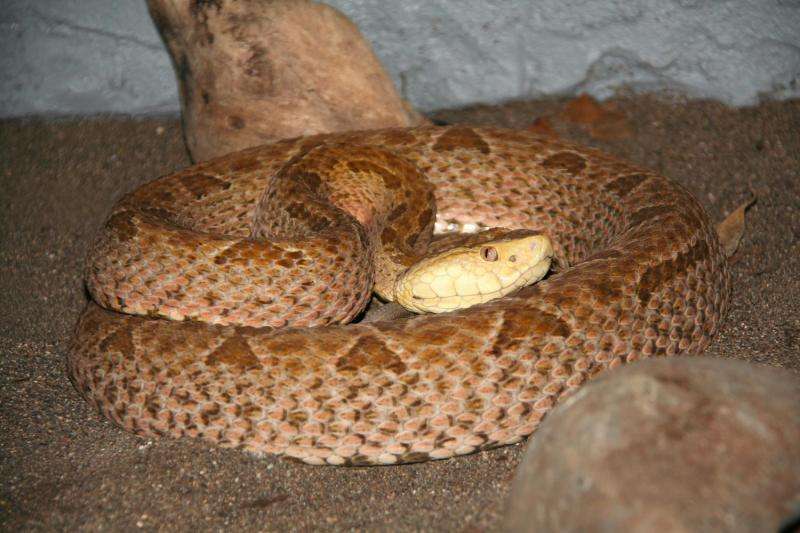September 14, 2015 report
Study indicates El Nino causes more people to be bitten by snakes

(Phys.org)—A team of researchers with members from Taiwan, Japan and Costa Rica has found a link between El Nino cycles and the number of people bitten by snakes in Costa Rica. In their paper published in the journal Science Advances, the team describes their study and their concerns for impoverished people as the planet heats up.
Prior research had found that as El Nino cycles through its hot and cold phases, more people tend to get sick, particularly those most at risk, such as those living in poverty. In this new effort, the researchers wondered if such people might also be at increased risk from snakebite during the same cycles.
To find out, they looked to Costa Rica, a country that has both a high rate of snakebites and a valuable database detailing the accounts of those bitten—in that country, all snakebites must be reported to authorities. Helping to improve reporting is the free health care provided by the government to anyone who is bitten. The team compared snakebite data (including time and date) through the years 2005 to 2015, when 6,424 people were bitten, with weather data, specifically, during times of change, such as during an El Nino event. Doing so, the group reports, revealed an increase in snakebites during both hot and cold cycles. More specifically, the team found that for each one degree rise in temperature, there was a 24 percent rise in the number of people bitten. On average, they found, snake bites rose to two or three times the norm during El Nino hot and cold cycles.
The team suggests that snakebites are more common during cold spells because snakes have a harder time finding prey, and thus are more likely to venture into areas inhabited by humans. Snakes naturally become more active during warmer weather and that might account for more snakebites during the hot cycles. They also suggest it is possible the snake population goes up during an El Nino period due to less rain allowing for more plant growth.
The researchers also noted that poor people were much more likely to be bitten by snakes, and thus were more impacted during El Nino events—an ominous sign that suggests that those living in poverty are likely to face yet another challenge as the planet heats up.
More information: Snakebites are associated with poverty, weather fluctuations, and El Niño, Science Advances 11 Sep 2015: Vol. 1, no. 8, e1500249 DOI: 10.1126/sciadv.1500249
Abstract
Snakebites are environmental and occupational health hazards that mainly affect rural populations worldwide. The ectothermic nature of snakes raises the issue of how climate change's impact on snake ecology could influence the incidence of snakebites in humans in ways that echo the increased predation pressure of snakes on their prey. We thus ask whether snakebites reported in Costa Rica from 2005 to 2013 were associated with meteorological fluctuations. We emphasize El Niño Southern Oscillation (ENSO), a climatic phenomenon associated with cycles of other neglected tropical diseases (NTDs) in the region and elsewhere. We ask how spatial heterogeneity in snakebites and poverty are associated, given the importance of the latter for NTDs. We found that periodicity in snakebites reflects snake reproductive phenology and is associated with ENSO. Snakebites are more likely to occur at high temperatures and may be significantly reduced after the rainy season. Nevertheless, snakebites cluster in Costa Rican areas with the heaviest rainfall, increase with poverty indicators, and decrease with altitude. Altogether, our results suggest that snakebites might vary as a result of climate change.
Journal information: Science Advances
© 2015 Phys.org





















